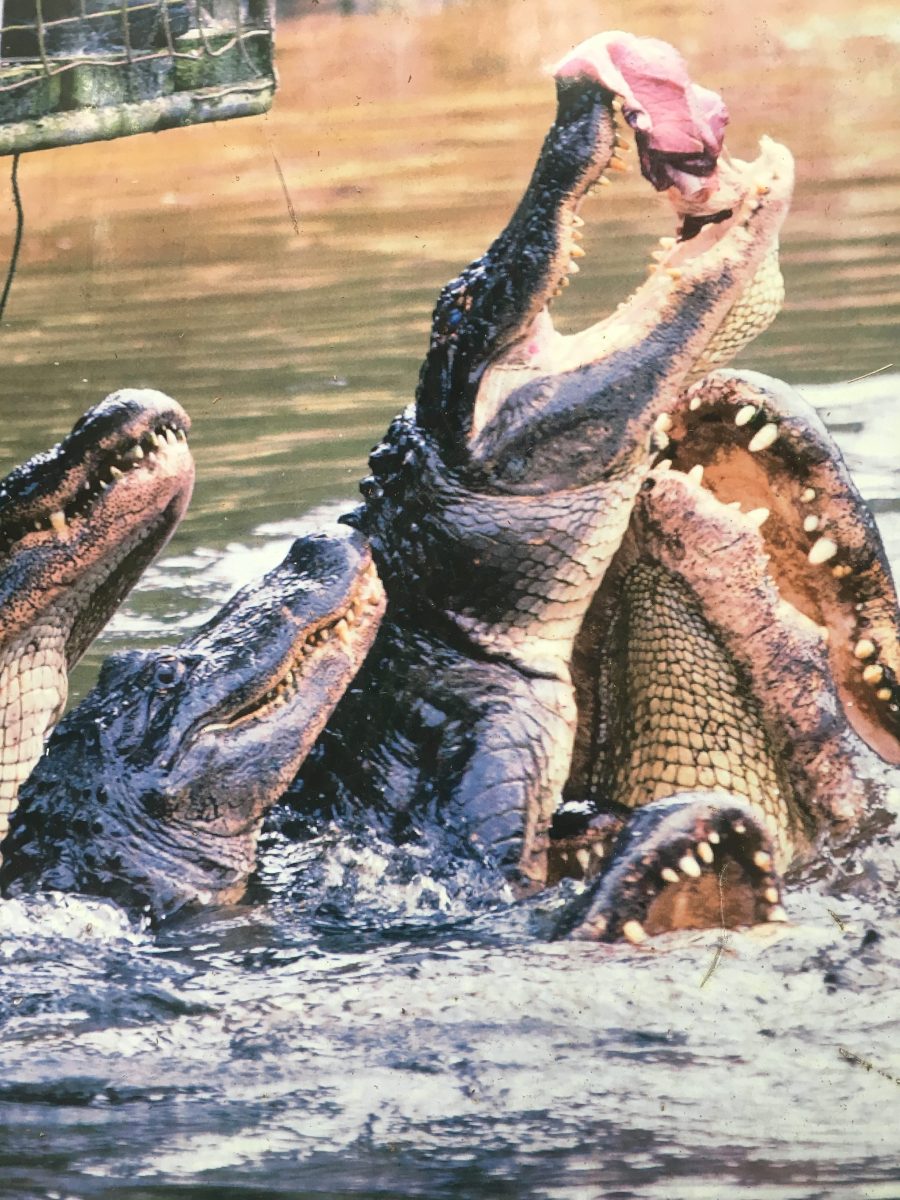Orlando, Florida: After several publicised attacks in Florida, tourists and citizens alike are wary of these animals but will still pay money to go see them when they are captured.
With the case of the alligator killing the toddler in Disney and several reports of alligators mauling dead bodies, these animals have gotten a lot of bad press. With a dramatic increase in attacks over the past year, with the amount of attacks not seen since 1977, citizens of Florida have become worried.
In Orlando, Fl., alligators can reach lengths up to 7 feet long, and there are 1.3 million alligators in the state of Florida, meaning there is one alligator per every twenty people. After having 16 bite incidents in the recent year of 2017, tourists and citizens of the state alike are cautious to not intrude on these wild animals natural habitat.
This state has the most American alligators in the nation, with over 1.3 million alligators, and a new high regarding the number of attacks. “From 1948 to 2016, 388 unprovoked bite incidents have occurred in Florida,” a spokeswoman for the Florida Fish and Wildlife Commission said in CBS news.
However, these attacks do not go without explanation. A spokeswoman from Florida Fish and Wildlife Commission reported on Fox News that alligators show more activity in warmer temperatures. Changes in temperature and weather patterns has affected animal’s natural habitat over the past thirty years.
The temperature of our earth is unarguably rising. As NASA’s Earth Observatory reports, “According to an ongoing temperature analysis conducted by scientists at NASA’s Goddard Institute for Space Studies (GISS), the average global temperature on Earth has increased by about 0.8° Celsius (1.4° Fahrenheit) since 1880.”
This heat brings out these , increasing the number of attacks and sightings. These attacks in Florida have increased dramatically, due mainly to the increase in heat, as well as changing weather, such as the recent hurricanes like Hurricane Irma.
The majority of the well-known attacks, other than the rare ones such as the one in Disney, occur when the alligator becomes protective of their home or eggs suach as when the victim enters their natural habitat. Many of the times, these attacks are acts of defense, and the alligators should not be blamed.
Similar to many other officials attempting to calm nervous tourists and citizens of Florida, as executive director of the Florida Fish & Wildlife Conservation Commission (FWC), Nick Wiley told CBS News that if a gator “attacks a human it’s mistaken.”
The Treatment of Alligators in Florida
The majority of tourists arriving in Florida come to try and take advantage of the warm weather or to see the amusement parks. One of the better entertainment methods is seeing the animals that have taken up so much of the press lately; the alligators. When out in the wild, tourists seem terrified to see alligators in their natural habitat, but will still pay money to go see them when they are captured and safely away from humans. Used as tourist traps, owners of so-called “conservation areas” have the American Alligators in tight enclosures while visitors shout and take pictures around them.
One such area is the Wild Florida Park. Upon arriving, there is a small gift shop packed with people in tank tops conversing with each other. Once out, there are several restaurants outside, such as the “Chomp House” with an alligator with its mouth open as the logo, again proof of these animals being used as an attraction.
The trail starts right outside there, soon leading onto an elevated platform made out of wood, marsh lands on either side. Tall trees and root-like weeds called Cyprus knees rise out of the scentless grass bellow. On either side of the platform, there are signs continuing all the way to the end, warning to “stay on the marked path,” to advise the more rowdy tourist away from the natural habitat of these alligators.
“I’m scared [of alligators] but also unhappy about their treatment. The majority sit in a tight cage all day,” Florida homeowner and grandfather Robert Hooker said. Even though they are feared, these animals are used to lure tourists.
And he has a point; these animals are kept in zoo-like places and not in their natural habitat, where they can do no harm to humans. Of course, though, the alligators attract many people in locations such as zoos and wildlife parks because of the danger they bring, making money for owners of such areas.
Due to recent weather, alligators in Florida have been more active with the most attacks in history happening in 2017. Yet tourists and citizens alike will still pay money to see these animals, but only if they’re in cage.

































































